Boeing B-17F Flying Fortress, Off Ballydavid, Co. Kerry, May 1944
The morning of the 29th of May, 1944, Kerry farmer Maurice O'Connor and family were awoken by visitors to their home in Ballycurrane townland on the Dingle Peninsula, Kerry. Outside he would find four tired and wet Allied airmen who had just survived the ditching of their Flying Fortress bomber some miles off the coast. The O'Connors took them in and provided warmth and shelter. Not only that but upon hearing that there were four other airmen still at sea, Maurice promptly gathered three other boatmen, Thomas Kennedy, Maurice Leahy and Patrick Leahy and rowed out into the early morning to find the missing men.
The aircraft was flown by the United States Army Air Forces Heavy Reconnaissance unit, the 25th Bombardment Group. At this particular time the unit was known as the 802nd Reconnaissance Group and within that the aircraft and crew flew with the 8th Weather Reconnaissance Squadron (Heavy). They were based at Watton in Norfolk, but the large B-17's sometimes flew from the nearby North Pickenham airfield which had better runways. The story of what happened on that flight was recorded at the time by the Captain of the aircraft during a debriefing in the days following the ditching and subsequently fifty years later when various members of the crew provided their memories to researchers in Ireland and in the United States. The Irish Army Archives also contained the files on what had happened on the ground during the incident.
The flight began from the airfield at North Pickenham on the
evening of May 28th, bound for the Atlantic on a weather
observation mission with the operational profile code named
'Epicure'. A brief description of this type of mission was given
by Bill Young in a letter to author Norman Malayney. "The normal programme for such a flight was
to fly from base to St. Eval and then head out over the
Atlantic on a track of 260 degrees from true north.
Meteorological observations were to be made at a pressure
level of 950 millibars at 14 numbers positions along that
track each 50 nautical miles apart. 950 millibars does not
always equate to the same height since sea level pressure
and air temperatures vary bit it usually equals roughly
1,800 feet. At positions 4, 8, 12 and 14 we would also
descend to measure sea level pressure usually from a height
of 400 feet as recorded on the radio altimeter. Then we
would climb quickly to 950 millibars again to make
observations at that level.
In his log book,
Bill Young indicated he recorded six hours and eight minutes
of daylight flying and four hours of night flying with the
following narrative: Epicure. At
position 13 trouble with starboard outer engine.
Unable to feather. Headed for land. Later port
inner feathered. Ditched 0315 hours. Reached
land 0720 hours in dinghy.
This mission however began to go wrong when the No 1 engine had to be feathered around midnight, forcing 2/Lt Lorenz to abandon the mission and return to base on three engines. Suddenly engine No. 3 also began to give trouble and that also had to be feathered, meaning that the propeller blades were rotated edge on to the airflow to reduce draft. They flew for two hours on the two remaining engines until the dark shadows of Ireland were made out. Knowing that there was high ground, the Captain elected for a ditching and the non flying crew members braced themselves into the radio compartment behind the bomb bay. Lt Lorenz and Lt Ketterer successfully brought the stricken bomber to halt in the thankfully calm waters. The map below shows the basic layout of key places mentioned in the text. The town of Dingle is referred to in its Irish name, Daingean Ui Chuis.
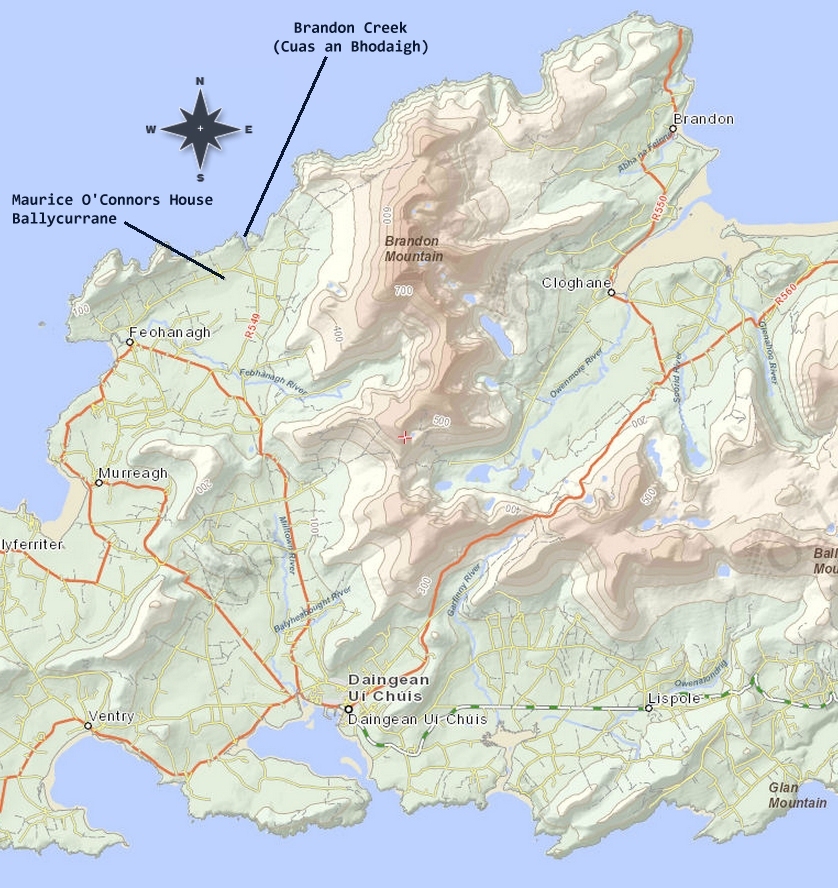
Having ditched the aircraft, the crew then had to abandon the
floating aircraft and take to the two life rafts built into the
aircraft's spine. This was managed but only to reveal that one
of the dingies would not fully inflate. Four of the men
struggled to shore and raised the alarm with Maurice O'Connor.
Following the successful rescue of the men in the dinghy, all
eight men were given food and shelter at the O'Connor household
until the morning.
The war diary for US Navy Fleet Air Wing 7, the anti submarine
force based at Dunkeswell in Cornwall, recorded that two
aircraft were sent on search missions for a missing USAAF B-17
aircraft on May 29th, 1944. The aircraft was recorded as
having landed in the water off the southern Irish Coast and all
the personnel were saved.
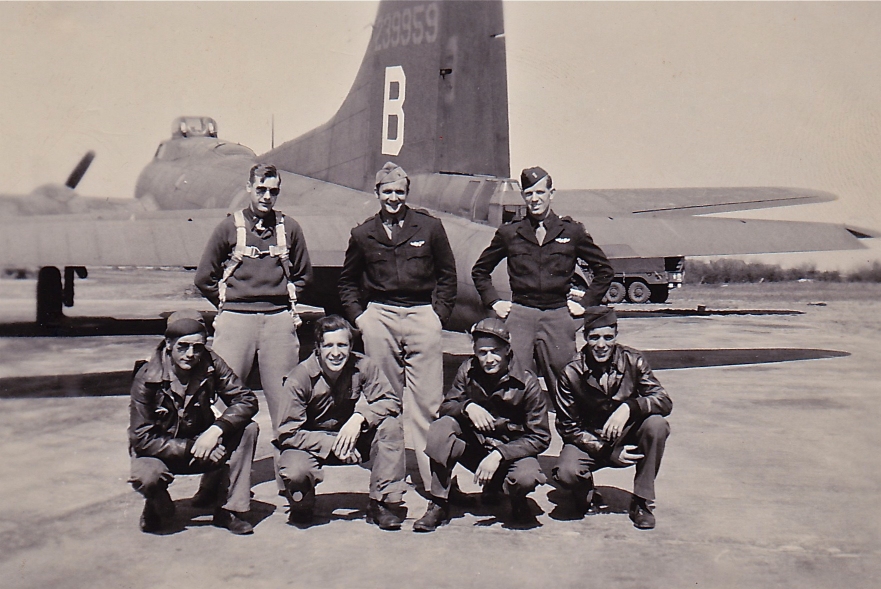
This wonderful photo supplied by the Swerdlowe and Westerlin
families, shows the seven American members of the crew of the
Boeing Flying Fortress which ditched off the coast of the Dingle
Peninsula in 1944. From the left- (At rear, standing, The
Commissioned Officers), : Lorenz, Swerdlowe, Ketterer - (at
front, kneeling, the enlisted men) Richardson, Bubulka,
Westerlin, Tarvin.
They are seen in front of a B-17G Flying Fortress, serial
number 42-39959. This aircraft had been assigned to the 385th
Bomb Group until May 1944 when it was transferred to the 802nd
Recon Group. This particular aircraft survived the war.
Upon their return to the United Kingdom, Lt Lorenz was
interviewed by an intelligence officer and filed a report, which
sadly is written in a very peculiar hand writing by that officer
that it makes transcription very difficult. The report
reads, as can best be transcribed:
Home base WATTON. We
fly(ing) from North Pichanam St
Eval aerodrome because better
runways. We fly overland to St Eval. [???] reconnaissance and weather
observation. Left North Pichanam on the 28th – we
proceeded as usual. Did our observation as usual on
the way out. On the way in we ran into engine trouble
[??] miles away from the
final position before coming back. Oil trouble.
Decided to get a course which would take us a few miles from
[???????] and if we were
alright head for England. Another engine went
out. We were 50 miles west of Ireland. Loosing
altitude, hanging on our props. I managed to make the
coast line. We had thrown out everything we did not
need. (destroyed secret equipment). I set her in the
water (about 9 miles went of Dingal, Ireland) 3 miles
out. We all got out, she floated for 2 or 3
minutes. We sat on the wing, we were on our
raft. We had ditched at 0315 In the morning (same
local). The sea was rather calm. We rowed
inland. We reached shore about 0700 hrs. the
first dingey had come in a little before, walked up some
people, they were taken in given whisky four? men in a row
boat came and towed us in. took us to their house,
dried us up gave us tea whiskey.After that the fisherman in
a cart took the co-pilot navigator, assistant engineer and
gunner went to the local authority, police station, we
followed a half an hour later. The co-pilot told them
we had engine trouble. That’s all they said.The police
took us to the hotel in Dingle we had only been there an
hour when had changed clothes when army men came regular
army, a major and a doctor captain and another
captain. They did not question us. We stayed
there all day. The doctor looked us over. Stayed
there all day the 29th. The following morning 30 we
left at 7AM in 2 cars and a ambulance with for the RAF
base?. They took us through a devious route to
Northern Ireland (that because our ??? would be broadcast
through Northern Ireland). We would
give impression we were going to Dublin. We stopped on
the way to Limerick. We ?????? the ??????? went to
house looked like police station. There the was a GI
back in a courtyard out of view and Capt Grey? waiting for
us. And he took us to an airfield ATC hall?.
The major told me that one of the
Rafts. (No hand pump on them and they only inflated ½
way. Found some oxygen bottles and bits of wood.
Probably ????? ????? ????. Stayed there about 2 days.
Interrogated there by Capt. Grey. We flew here with
Lt. Col Clacken. (He was interested in ditching
and Capt. Grey and Capt. ??? told me how much I could tell).
In case of ditching
Instruction
The only instruction we had if landing in Southern Ireland
is that we were on a training mission. We had escape
pouch? and kits. They went down with ship.N.B. We did
sea a Catalina . 3 hrs after we ditch we fired a flare
but they did not ???? us.
The crew of seven American's had begun their wartime adventures
while training in the USA during 1943. USAAF morning
reports finds them stationed at Dalhart Field, Texas in November
1943 stationed with the 333rd Bomb Group and being assigned to
the Boss Provisional Group for their transfer to Europe.
As part then of a normal ten man bombing crew, they were to
travel by train to Grand Island Army Air base in Nebraska
starting on November 21st. They had at this time a
bombardier and two additional gunners as part of the crew.
By the 22nd of December they can be all found assigned to the
11th Combat Crew Replacement Center in England.
Lt Michael J. LORENZ O-804695 Pilot
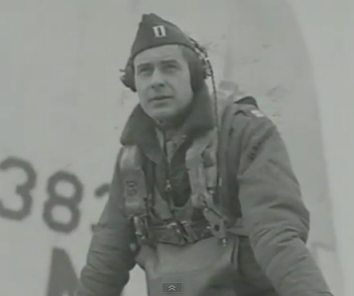 Michael John Lorenz Jr was born in
1918 to Michael and Elizabeth Lorenz in Ohio. He worked as
a steel worker in Cleveland before he joined the Army Air Forces
in July 1941, prior to America's entry into the war. He married
his wife Leona in Florida on 27th June, 1943 while he was based
at Hendricks Field.
Michael John Lorenz Jr was born in
1918 to Michael and Elizabeth Lorenz in Ohio. He worked as
a steel worker in Cleveland before he joined the Army Air Forces
in July 1941, prior to America's entry into the war. He married
his wife Leona in Florida on 27th June, 1943 while he was based
at Hendricks Field.
His promotion to the rank of Major was reported by his local
newspaper in June 1945.
Michael returned to his home state after the war and passed
away in Parma, Ohio in September 1996. His wife and daughters
joined Larry Ketterer and Allen Swerdlowe during their visit in
1999.
Lt Laurence J. KETTERER O-751548 Co-Pilot
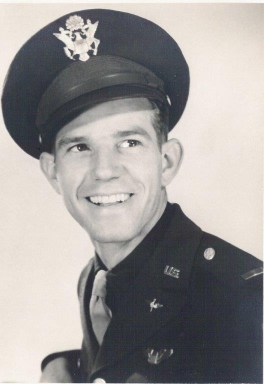 Laurence was born in 1918 in Ohio.
The 1940 census shows him to be an apprentice machinist. He
enlisted in the Army in February 1942 in Newport, Kentucky.
Laurence was born in 1918 in Ohio.
The 1940 census shows him to be an apprentice machinist. He
enlisted in the Army in February 1942 in Newport, Kentucky.
After the war, his occupations included home builder, cement
contractor, real estate agent, and Butler County employee, from
which he retired in 1999. In 199x he was able to visit Dingle
with two of his daughters to see the area where he had almost
come to grief. Their visit was covered in a documentary,
Journeys to Remember.
He passed away in September 2000 in Nebraska while attending an
Air Force Reunion.
Lt Nathan SWERDLOWE O-688480 Navigator
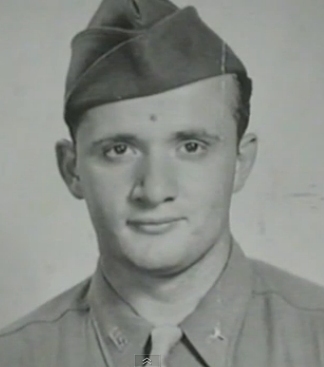 Nathan was an Officer from New York.
Born in 1920, Nathan passed away from Cancer in 1958. His son
Allen has made great efforts to remember his father and wrote
the following article in a 1999 edition of the Daily
Cardinal Alumni Association.
Nathan was an Officer from New York.
Born in 1920, Nathan passed away from Cancer in 1958. His son
Allen has made great efforts to remember his father and wrote
the following article in a 1999 edition of the Daily
Cardinal Alumni Association.
S/Sgt Arnold W. ""Wes"" WESTERLIN 17164938 Top Turret
Gunner/Engineer
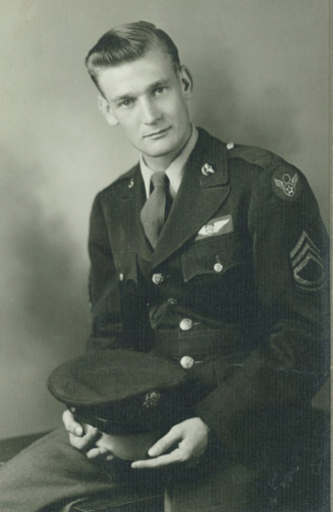 'Wes' Westerlin came from Dawson
County, Nebraska. His story is told in an article on the Nebraska
KRVN 880 rural radio station website, click on the image
below to read the page.
'Wes' Westerlin came from Dawson
County, Nebraska. His story is told in an article on the Nebraska
KRVN 880 rural radio station website, click on the image
below to read the page.

Arnold died in May 1990.
S/Sgt Joseph J. BUBULKA 33468840 Radio Operator
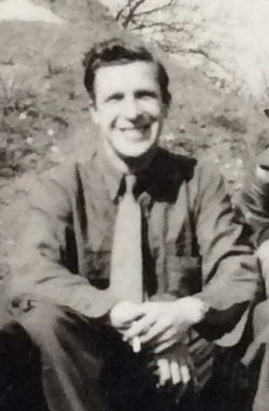 Joseph was born in 1913 in
Pennsylvania. The 1940 census shows that he worked in a Cotton
Mill, the same job description as his father. He enlisted in
November 1942 and trained as a Radio Operator. He traveled
overseas in November 1943, and remained in England until
September 1944. He was Honorably Discharged in September 1945
following his return from Europe. His wartime awards included an
Air Medal with 5 Oak Leaf Clusters and the European African
Middle Eastern Service Medal With 3 Bronze Service Stars. His
unit at discharge was the 3505th AAF Base Unit. Joseph worked
for 29 years with the General Electric Co. Philadelphia as a
cutter grinder. He died in January 1998 in Aldan, Pennsylvania.
Joseph was born in 1913 in
Pennsylvania. The 1940 census shows that he worked in a Cotton
Mill, the same job description as his father. He enlisted in
November 1942 and trained as a Radio Operator. He traveled
overseas in November 1943, and remained in England until
September 1944. He was Honorably Discharged in September 1945
following his return from Europe. His wartime awards included an
Air Medal with 5 Oak Leaf Clusters and the European African
Middle Eastern Service Medal With 3 Bronze Service Stars. His
unit at discharge was the 3505th AAF Base Unit. Joseph worked
for 29 years with the General Electric Co. Philadelphia as a
cutter grinder. He died in January 1998 in Aldan, Pennsylvania.
S/Sgt Lee W. RICHARDSON 15337989 Waist Gunner
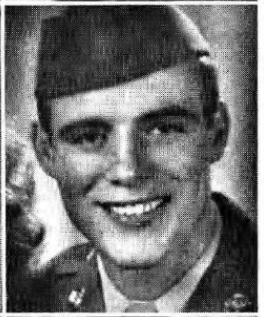 Lee Richardson's obituary tells his
life story in brief: Lee Woodrow
Richardson, age 85, of Caretta, died Saturday, January 24,
2009, at Golden Harvest Nursing Care at Welch Community
Hospital. Born May 7, 1923, in Six, W.Va., he was the son of
the late Grover and Dolly Quesenberry Richardson. He was a
resident of Caretta for 63 years, a 1942 graduate of Big
Creek High School, where he was a three-sports participant
in football, basketball and track. He entered the Army Air
Corps where he was a gunner on the aircraft Badger Beauty, a
B-17 reconnaissance bomber for the 25th Bomb Group, 652nd
Heavy Weather Squadron, based in Watton, Norfolk, England.
On May 28, 1944, eight days before the D-Day invasion of
Europe, his flight was aborted due to mechanical problems,
and the crew ditched off the southern coast of Ireland. It
is believed to be the only crew of eight members to totally
survive a crashed flight prior to the D-Day invasion. He was
also a member of the Caretta United Methodist Church, the
Berwind Lodge 141 A.F. and A.M. He was a former member of
Voiture 1171 of the 40 and 8 Society. He was member of the
American Legion and UMWA with 41 years of service. He was
veteran of World War II, where he received the Air Medal for
Heroism, and was a member of the War Kiwanis Club
Lee Richardson's obituary tells his
life story in brief: Lee Woodrow
Richardson, age 85, of Caretta, died Saturday, January 24,
2009, at Golden Harvest Nursing Care at Welch Community
Hospital. Born May 7, 1923, in Six, W.Va., he was the son of
the late Grover and Dolly Quesenberry Richardson. He was a
resident of Caretta for 63 years, a 1942 graduate of Big
Creek High School, where he was a three-sports participant
in football, basketball and track. He entered the Army Air
Corps where he was a gunner on the aircraft Badger Beauty, a
B-17 reconnaissance bomber for the 25th Bomb Group, 652nd
Heavy Weather Squadron, based in Watton, Norfolk, England.
On May 28, 1944, eight days before the D-Day invasion of
Europe, his flight was aborted due to mechanical problems,
and the crew ditched off the southern coast of Ireland. It
is believed to be the only crew of eight members to totally
survive a crashed flight prior to the D-Day invasion. He was
also a member of the Caretta United Methodist Church, the
Berwind Lodge 141 A.F. and A.M. He was a former member of
Voiture 1171 of the 40 and 8 Society. He was member of the
American Legion and UMWA with 41 years of service. He was
veteran of World War II, where he received the Air Medal for
Heroism, and was a member of the War Kiwanis Club
Lee was included in a post war publication, World War II
Young American Patriots, 1941-1945 where his list of
decorations are included, an Air Medal with four Oak Leaf
Clusters, Three Bronze Stars and a Good Conduct Medal. His
training had taken him to many places in the United States
following his enlistment.
Sgt Harold TARVIN Jr 36448995 Waist Gunner
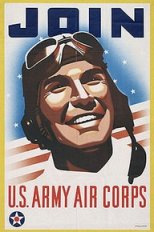 Harold Tarvin
was a young man from Illinois. Born in 1924 he was the son of
Harold and Bernice Tarvin. His mother later remarried and his
step father in 1940 was Denzil Malone, with the family living in
Havana, Illinois. He enlisted in February 1943 and served until
May 1945. He was posted home in September 1944 possibly
due to illness.
Harold Tarvin
was a young man from Illinois. Born in 1924 he was the son of
Harold and Bernice Tarvin. His mother later remarried and his
step father in 1940 was Denzil Malone, with the family living in
Havana, Illinois. He enlisted in February 1943 and served until
May 1945. He was posted home in September 1944 possibly
due to illness.
He was awarded the Air Medal with four Oak Leaf clusters. He
died June 25th, 1954 six days after being struck by a car in
Cuyahoga Falls, Ohio where he lived with his wife Beverly and
three children. He was buried with a military veterans
grave marker in Havana, Illinois. His final rank was that of
Staff Sergeant.
Sgt William Brotherston YOUNG 1870237 RAF Weather
Observer
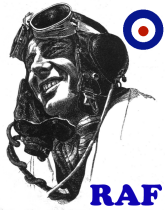 Sgt
Young was, unlike the other crew members, a member of the Royal
Air Force. He was born in 1924 in Edinburgh.
Sgt
Young was, unlike the other crew members, a member of the Royal
Air Force. He was born in 1924 in Edinburgh.
He explained in letters to Nathan Swerdlowe that he had flown with several RAF units as a MAO, Meteorological Air Observer. His name is found listed in the ORB for the RAF's 518 (Met) Squadron flying from RAF Tiree in the Hebrides, Scotland before being posted out in March 1945 to 5 (Coastal) Operational Training Unit. He was commissioned as an officer in the Meteorological Branch in the later part of 1945. Following the war, he continued his career as a Meteorological expert with the RAF but as a civilian. He was posted to Libya for a time in the 1950's. He appear to have married Agnes Dawson Wingate in Springburn in 1959. He was involved in the various research activities during the 1990's into the story of 'Badger Beauty'. He passed away in 2002 in his native Edinburgh.
The aircraft on which this crew flew on the fateful day to Dingle was a Boeing B-17F-40-DL Flying Fortress. This aircraft came from a batch of the famous bombers built under contract by Douglas at their Long Beach, California plant. It was delivered to the Army Air Forces in April 1943 and by June it had been flown to England and assigned to the 100th Bomb Group. Arnold Westerlin's son found that the aircraft only flew six missions with the Bomb Group before receiving battle damage on July 10th. During its time with the 100th Bomb Group it appears to have carried the nose art 'Badger Beauty' painted on the nose, and also the name Hells Bells. Arnold Westerlin's memories seem to indicate that the aircraft was not known by either name when it was in the 802nd Group, it may have been repainted or removed during repair and maintenance.
Allen Swerdlowe was able to provide copies of the following three images of airmen.
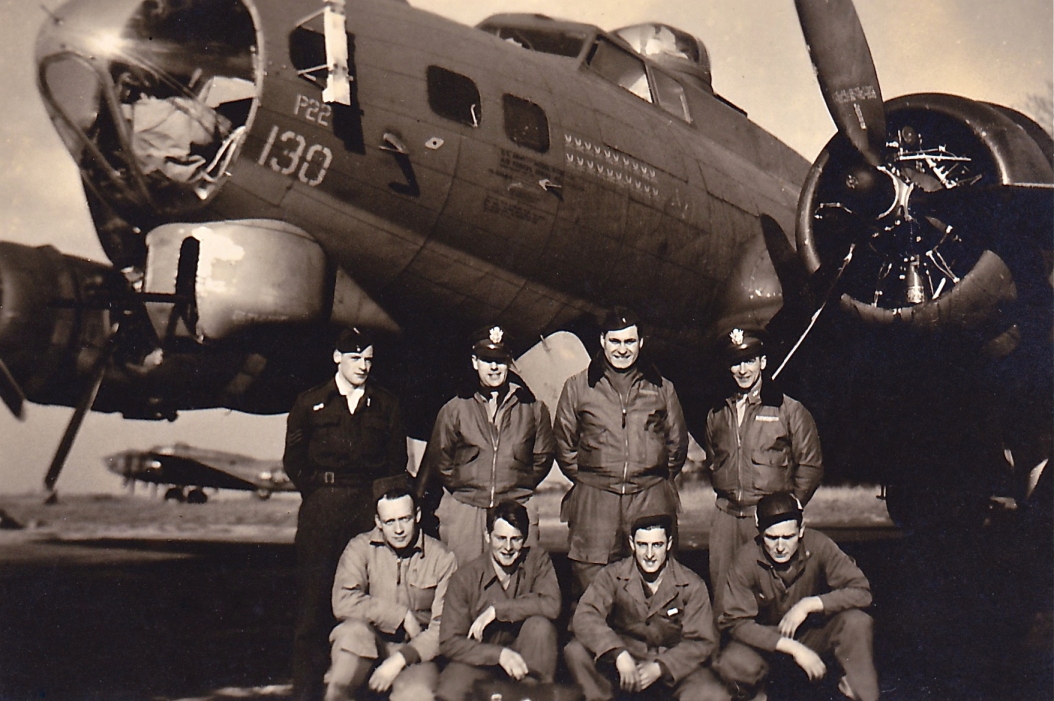
This photo taken in front of a B-17G shows eight individuals, including one RAF airman standing at the left. It is not known if this is William B Young. Confirmation is required. It is thought that this aircraft may be B-17G-1-BO serial number 42-31130, an aircraft listed as assigned to the 25th Bomb Group in 1943.
This photo of ten airmen includes the three officers involved in the ditching in Ireland, kneeling from the left. This photo includes a Bombardier in the crew but also duplicate engineer and radio operator crew members. The airman standing at left may be Arnold Westerlin. The tall airman next to him (2nd from left) would seem to be Harold Tarvin. The third man standing form left, may be Joseph Bubulka. The fifth man standing may be Lee Richardson. The aircraft behind them carries the serial 42-29510, indicating it was a Boeing B-17F-55-BO. According to Dave Osbourne's Master Log of B-17's, this aircraft remained in the United States throughout its life. Its posting history is mainly to Base Units, indicating that it was used as a training aircraft. This source suggests it was written off in October 1944 but also that it was serving with Selman Field through 1945. In any case, this probably explains the 10 man crew photographed, this would likely have been the original role the crew trained for, but upon arrival in England were assigned to the 802nd Provisional Recon Group. Hence a Bombardier would not be needed and the compliment of gunners reduced for the weather missions.
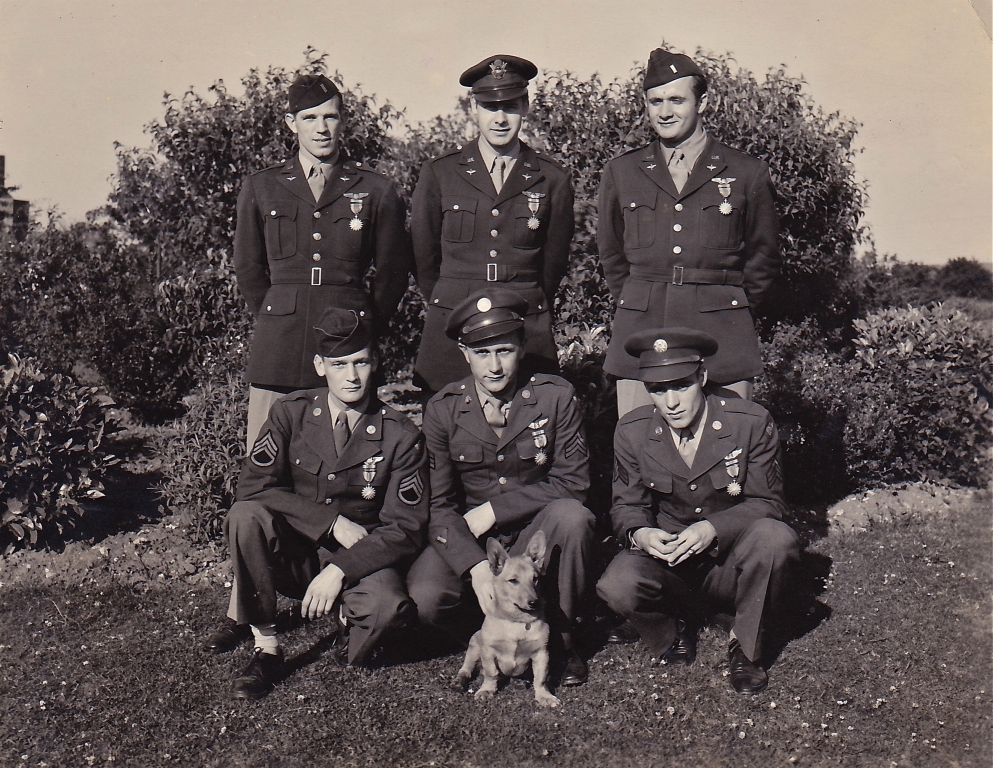
This wonderful image appears to be taken on the occasion of the award to six members of the crew the Air Medal. The three men standing are the Officers, Ketterer, Lorenz and Swerdlowe. Kneeling are three of the sergeants, the first having the arm stripes of a Staff Sergeant, the remaining two being Sergeants. The first airman may be Lee Richardson, the third may well be Harold Tarvin, the middle airman is not yet confirmed.
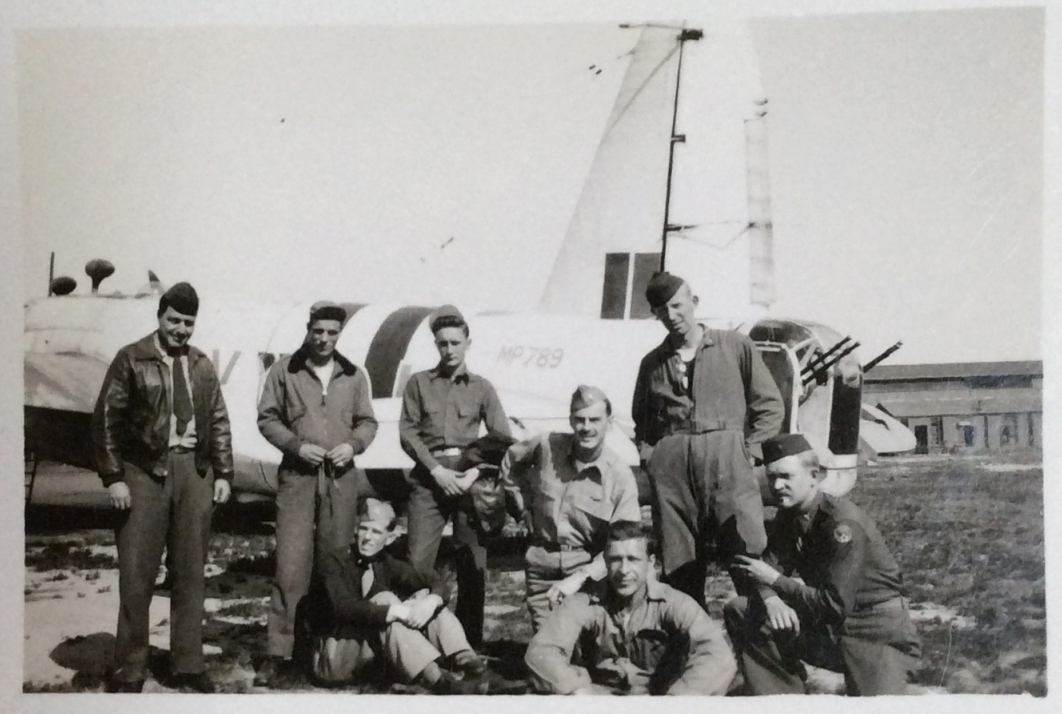
This image which came from the Bubulka family shows their father Joseph, seated at front, center with a group of Airmen. The interesting thing about this image is the aircraft in the background, a British Vickers Wellington of 172 Squadron, Royal Air Force. This particular aircraft, serial number MP789, can be seen to be carrying D-day 'Invasion Stripes', the black and white identification strips applied to all Allied aircraft for a period after the landings in Normandy. This would place the photo sometime after June 6th 1944 at least. On June 13th 1944, this aircraft attacked a German U-boat, U-270 in the Atlantic. The other airmen in the photo are not recorded on the original photo and may contain some of the crew members from 42-3279.
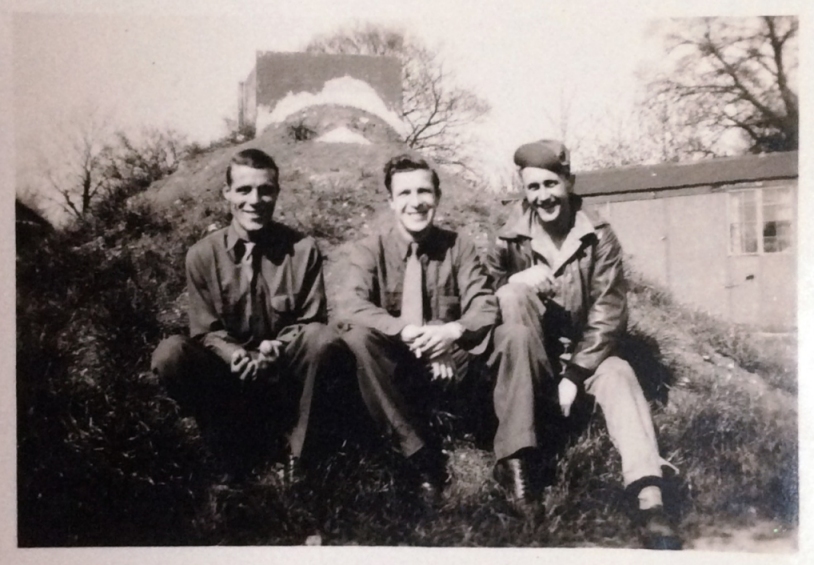
The above image comes from the Bubulka family of their father seated in the center flanked by it is thought, Westerlin (right) and Tarvin (left)
During 1998 and 1999, from an idea of Allen Swerdlowe, son of the aircraft navigator, the Travel Channel produced a documentary covering the return to Ballydavid in June 1999 of Larry Ketterer with his daughters, accompanied by Allen Swerdlowe and his son and also by the widow and daughters of Michael Lorenz. The show has been uploaded to Youtube by Allen Swerdlowe and can be watched online.
It should be pointed out that in almost every occasion of an aircraft landing during the war where there were survivors, the survivors were always taken into the care of the local police and thereafter by the Irish military once they arrived on the scene. The commentary claims that the crew were protected from the authorities at the risk of arrest and imprisonment. While this might make for interesting television, it is recorded that Maurice O'Connor brought four members of the crew to the Garda Station in Dingle on the morning of the 29th May, direct to the care of the state authorities. The narrator claims that "by law, 'captured' soldiers were to be turned over to authorities and imprisoned." This is at complete variance with the fact that the airmen in this case were at the very first opportunity brought to the local police station! There were only very few occasions during the war when foreign airmen evaded the Irish authorities, either by taking off in undamaged aircraft or by slipping over the border into Northern Ireland since they were so close to that. There is no evidence that any sanction was ever taken against Irish civilians for giving assistance to airmen who were not apprehended. It should perhaps be taken in the context of what was known of Ireland's wartime history in the late 1990's, it had only been in the past decade and a half that the archives from that period were becoming available. The documentary takes Victor O'Sullivan's comments about the route to the border a little out of context in this regard. Ireland was neutral during the Second World War and was not a combatant nation. Officially the Irish government needed to make the appearance of being as equally neutral toward Germany as it did toward the Allied nations. In reality, a line was taken that greatly favored the Allied side. This was purely practical due to the proximity of Great Britain and the entry of the United States into the war. No member of the American armed forces was ever interned in Ireland during the war. It was prudently decided by the Irish government that the potential fall out from doing this far outweighed any negative reaction from Germany. In the case of the crew of 42-3279, they were accommodated in Benner's Hotel in Dingle town on the night of 29th of May. The following morning, the 30th, they traveled in Irish Army vehicles including an Ambulance for Sgt W B Young, via Tralee and Limerick to Loughrea in Galway, from where they were taken to the border and handed over to Allied authorities.
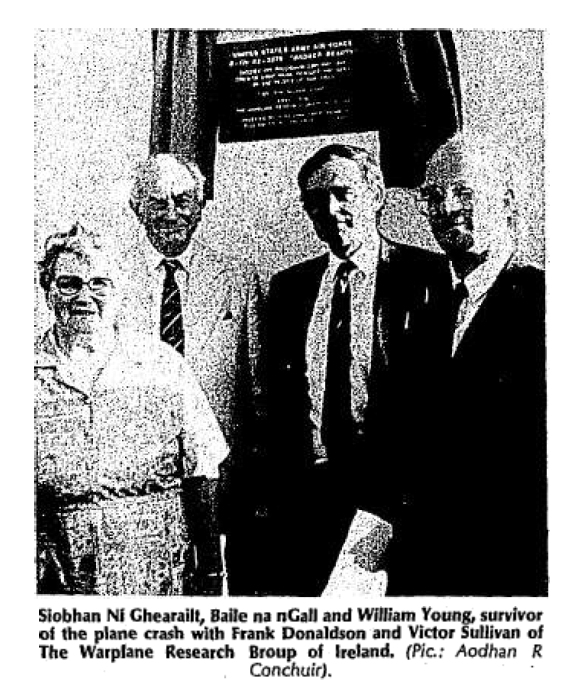 The
documentary makes a brief mention of the commemorative plaque
mounted on the wall of An Cúinne Pub in Feohanagh Village. This
was installed in July 1989 when William Young, the then RAF
Meteorological Air Observer (MAO) visited the area and unveiled
the plaque on behalf of the Warplane Research Group of Ireland
(WRGI). He as presented with a model of the curragh boat that
had figured so prominently in his rescue. The photograph at left
shows part of the ceremony and was published in the Kerryman
newspaper. If anyone should have a clear copy of this image a
scanned copy would be much appreciated.
The
documentary makes a brief mention of the commemorative plaque
mounted on the wall of An Cúinne Pub in Feohanagh Village. This
was installed in July 1989 when William Young, the then RAF
Meteorological Air Observer (MAO) visited the area and unveiled
the plaque on behalf of the Warplane Research Group of Ireland
(WRGI). He as presented with a model of the curragh boat that
had figured so prominently in his rescue. The photograph at left
shows part of the ceremony and was published in the Kerryman
newspaper. If anyone should have a clear copy of this image a
scanned copy would be much appreciated.
Compiled by Dennis Burke, 2017, Dublin and Sligo. Information Sourced from the Irish Military Archives, Martin Gleeson and the US NARA, the families of the crew of B-17F 42-3279, and ancestry.com records.
